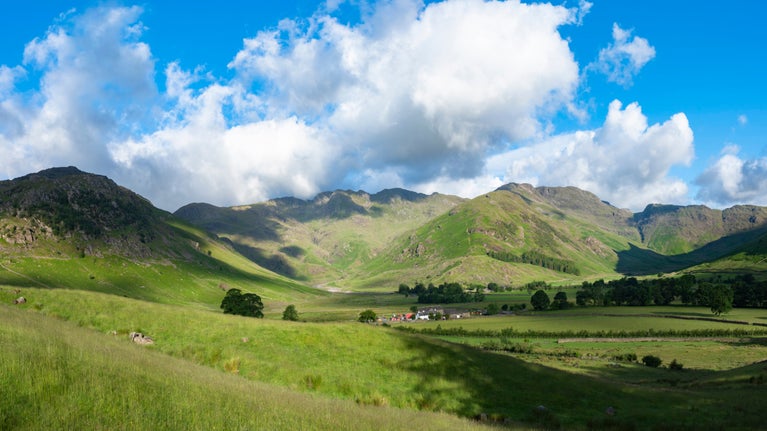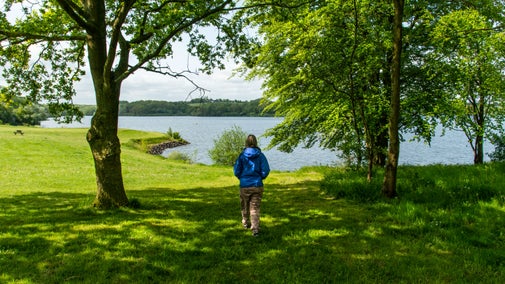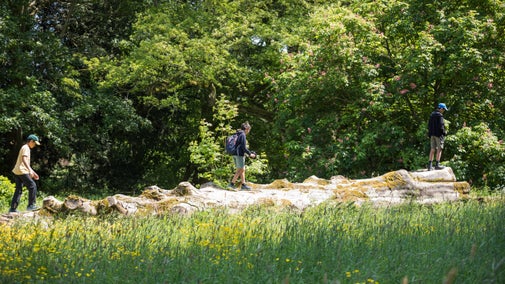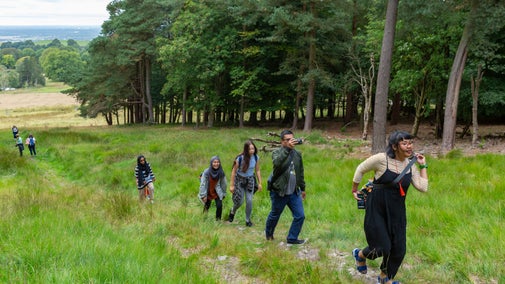
Nature conservation
From ancient trees to bees and butterflies, our places are full of life. We're working hard to safeguard nature for years to come.

From September 2025 through to the end of February 2026, forestry operations will be taking place at Foremark from Monday – Friday. This page sets out to explain why we’re thinning the trees and benefits it will deliver.
The trees at Foremark were planted several decades ago. They’re roughly the same age and are growing close to one another, which means that there’s not a lot of light reaching the woodland floor. Respacing will allow more light in and encourage the growth of woodland ground flora and the continuing healthy growth of the remaining trees.
We’ll be removing a mixture of species, as we aim to create a woodland with a variety. However, many of the trees at Foremark are ash and infected with ash dieback, a windborne disease. Trees with the most advanced cases of ash dieback are prone to failing, so we’ll be prioritising the removal of these in areas where they may become a risk to visitors.
Thinning the woodland will give remaining trees room to mature and allow light in, giving new trees, shrubs, and plants a chance to grow. This will also create a varied woodland habitat, as a woodland that has trees of all different ages, as well as open areas without tree cover, is much better at providing habitat for wildlife.
The aim of this work is to create a woodland with a variety of ages and increase biodiversity by creating better homes for nature. By creating glades and scalloping rides – felling trees in scallop shapes along the edges of tracks and paths – this will create warm, calm areas, which are perfect for invertebrates, as many species need both trees and open spaces to thrive.
Where possible, deadwood will be left in the woodland, which is fantastic for fungi and insects, and creates the basis for other wildlife to thrive. Dead trees that are still standing support different species, such as insects and bats, so we’ll increase habitat for both.
Veteran trees are mature trees, which are a vital habitat for hundreds of species, particularly fungi and insects, which then form a food source for a host of other creatures. As part of the forestry works, we’ll begin to remove young, competing trees, which will create space for our future veteran trees. We’ll be choosing trees with hollows, deadwood, splits, and holes, to become the next generation of veteran trees, as we lose the old veterans. A lot of the species associated with deadwood and veteran trees do not travel far, so it’s important to have future veterans close to existing ones.

Forestry works will be in operation from Monday – Friday from September 2025 to the end of February 2026. During this time, diversions will be in place, which may disrupt your normal walking route. Please respect the path closures and stick to the diversions in place. We apologise for any inconvenience caused.
The tree surgery contractor will use specialist machinery to remove trees safely and exclusion zones will be in place to keep visitors safe. The machinery may be loud while in operation.
When exploring Foremark at this time, please keep dogs on short leads and stick to open paths, as large machinery will be present. If you’re looking for a place where your dog can roam off-lead, visit our neighbouring property, Staunton Harold.
The bridleway will remain open during tree felling operations; however, there may be times where you are temporarily stopped on your walk for safety reasons.
Horse riders should be aware that there will be large machinery in use adjacent to the bridleway and at points crossing the bridleway. There may be times where you are temporarily stopped on your ride until it’s safe to proceed.
By letting more light into the woodland, the footpaths will also receive more light, helping them dry out faster in wet weather. Felling along the bridleway edge will make the bridleway feel more open, offering views into the wood, and creating a much more varied space to ride through.
This work will have a strong visual impact on the woodland, leaving some areas looking open and others less dense than before. However, this will develop in coming years, as remaining trees mature and new trees, shrubs, and plants grow. This will increase wildlife activity in the woodland, as new habitats are established for different species.

From ancient trees to bees and butterflies, our places are full of life. We're working hard to safeguard nature for years to come.
Nature reserve with woodland walks, grass heathland and open water

Discover woodland walks, diverse habitats and plenty of wildlife at Foremark, a 230-acre nature reserve in the heart of the Derbyshire countryside.

Countryside space with wildflower meadows, woodland walks and open water

Plan a visit to one of the special countryside places in our care and discover the benefits of being in the great outdoors. Pack your walking boots and get ready to explore woodlands, valleys and rivers.

Find out about the extensive countryside and woodland places to explore in the Peak District and Derbyshire, from rugged peaks to wide expanses of moorland.

Explore some of the finest landscapes in our care on coastal paths, accessible trails, woodland walks and everything in between. Find the best places to walk near you.
